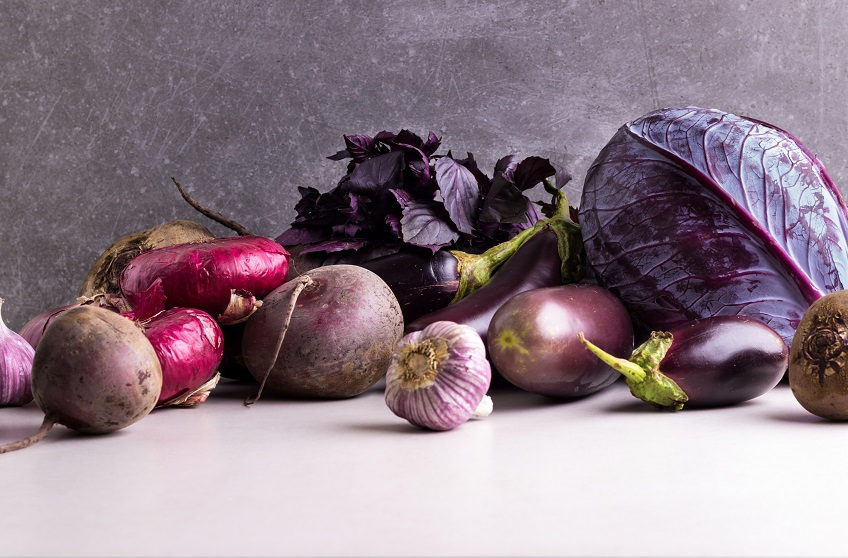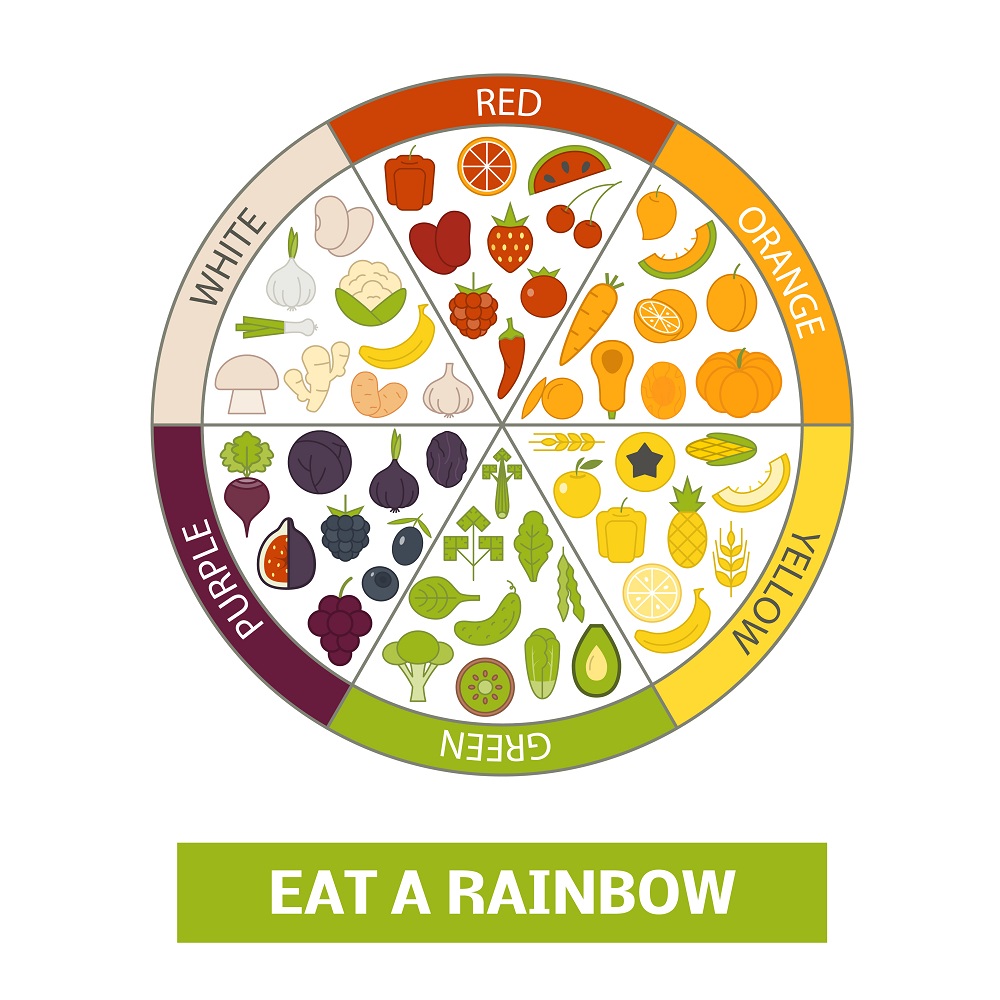Eat the Rainbow
One of the most common reasons that people give when their attempts at healthy eating fail is that the diet plans they’re trying to follow are too complicated. Too many of the plans out there require counting calories and carbs or doing complicated math to keep yourself fit.
If doing calculations isn’t for you, you might be interested to learn about a method of healthy eating based on the colours of the rainbow.
According to nutrition experts, the different colours in the fruits and vegetables that you eat are created by the nutrients, or phytochemicals, that exist within the foods. These nutrients each have different chemical makeups that provide different health benefits. For example, many phytochemicals can serve as antioxidants that help clear the body of free radicals. Antioxidants have been proven to reduce inflammation and improve cardiovascular health.
By ensuring that your diet includes foods from each distinct colour group, you can take advantage of the benefits of each type of phytochemical and create a well-rounded nutrition plan that will take into account all aspects of your health. (And it will make an Instagram-worthy plate!)
Green
Green is the colour that most people associate with healthful eating, so it seems like a logical place to start. Leafy greens in particular are packed with nutrients and are extremely important parts of a healthy diet. However, contrary to what many people believe, you don’t have to limit yourself to lettuce and kale to get the colour green in your diet. Here are some other delicious green options to put on your plate:
- Asparagus
- Avocados
- Broccoli
- Cucumber
- Green beans
- Peas
- Spinach
- Green apples
- Green grapes
- Kiwi
Green fruits and vegetables are important parts of a healthy diet because they contain carotenoids, indoles, and saponins. Carotenoids reduce oxidative stress. Likewise, saponins are anticarcinogens, which can reduce risk factors for a number of health ailments.
Some of these foods, especially the leafy green vegetables, are also important sources of the vitamin folate. Folate is an essential component in various metabolic functions, so a deficiency of this nutrient can be problematic for weight-loss efforts and overall health.
Red
There are many tasty red foods that dieters can add to their meals, especially if they enjoy fruits! These foods don’t just add a vibrant splash of colour to your plate, however. They also include important nutrients that are vital to your health. Specifically, red fruits and vegetables contain high concentrations of lycopene, a powerful antioxidant. Studies have shown that lycopene plays an important role in improving cardiovascular health.
There are a lot of great fruits and vegetables that have a beautiful, vibrant red colour, including the following:
- Tomato
- Radishes
- Rhubarb
- Strawberries
- Cherries
- Red grapes
- Raspberries
- Watermelon
- Red apples
Purple and Blue
Every day, our cells are bombarded by things that can cause damage to their delicate structures. Physical, chemical, infectious, biological, nutritional, environmental, and immunological factors are constantly waging war against our cells, ageing us and negatively impacting out health.

The phytochemical anthocyanin that is found in purple and blue fruits and vegetables protects our cells from various sources of damage
Luckily for us, the phytochemical anthocyanin that is found in purple and blue fruits and vegetables protects our cells from the damage that can be caused by these various factors. In addition, recent research had indicated that anthocyanin may play an important role in obesity control, cardiovascular disease prevention, and improvement of visual and brain functions.
Luckily, there are plenty of delicious fruits and vegetables containing anthocyanin that you can add to your plate, including the following:
- Beets
- Red cabbage
- Eggplant
- Blackberries
- Blueberries
- Purple grapes
- Plums
Orange and Yellow
Orange and yellow is another group that has a long list of fruits and vegetables to choose from. No matter the season, you’re sure to find something delicious to add to your plate:
- Carrots
- Corn
- Sweet potato
- Squash
- Pumpkin
- Pineapples
- Lemons
- Mangoes
- Oranges
- Peaches
- Nectarines
- Apricots
- Grapefruit
So, what phytochemical gives these foods their distinctive orange and yellow colours? In this case, we have carotenoids called beta-carotene and lutein to thank for the majority of the health benefits found in these foods.
According to prominent research, these carotenoids are excellent at combating much of the age-related degeneration that takes place in the body. In particular, beta-carotene and lutein strengthen the proteins in your eyes, decreasing the likelihood of degeneration and age-related eye conditions such as cataracts.
Brown and White
Brown and white may not be found in the traditional rainbow that you see in the sky, but they should be in the rainbow that you create on your plate. Foods that are brown and white in colour contain important phytochemicals such as allicin, which is known as an antiviral and antibacterial phytochemical.
This means that having these foods in your diet can be particularly good for your immune system. In addition, some of the foods in the brown and white group contain high amounts of potassium, which is an essential nutrient for maintaining healthy blood pressure, bone density, and kidneys.
There are some delicious vegetables and fruits in the brown and white section of the food rainbow, such as the following:
- Cauliflower
- Potatoes
- Mushrooms
- Turnip
- Garlic
- Onions
- Ginger
- Brown pears
- Dates
- Bananas
If you’re more of an artist than a mathematician and you’d prefer creating a beautiful plate over counting carbs, eating the rainbow is the perfect way to ensure a well-balanced diet.
For anyone who wants to make sure that their body is getting enough of what it needs, something as simple as paying attention to the colours on your plate can make all the difference.










